Independence Palace in Saigon stands as a testament to Vietnamese history and as a manifestation of the distant 1960s architecture. Pieces of the past can be found throughout the Palace and if you’re a history buff, this place is next to heaven. Come explore!
I. General Information about Independence Palace in Saigon
-
Location
Independence Palace in Saigon is located at 135 Nam Ky Khoi Nghia in Ho Chi Minh City’s District 1. At the heart of the city, the Palace is within a stone’s throw of many other famous landmarks such as the Notre Dame Cathedral or the Central Post Office.

Therefore, it is very easy to reach this destination simply by taxi or on buses number 01, 02, 03, 04, or 05.
-
Admission fee
For entry to the Independence Palace in Saigon, refer to the fees below:
- Adults: 40.000đ/pax
- Students: 20.000đ/pax
- Children: 10.000đ/pax
-
Opening hours
The Palace is open from 8 AM to 17:30 PM, with ticket sales running from 8 AM to 4 PM.
II. The history of Independence Palace in Saigon
The Independence Palace in Saigon started off as the Norodom Palace – a mansion built by French colonialists to serve the Governor of Cochinchina in 1868. With its construction finished in 1871, the Palace became the residence and office for many French governors during the period from 1887 to 1945.
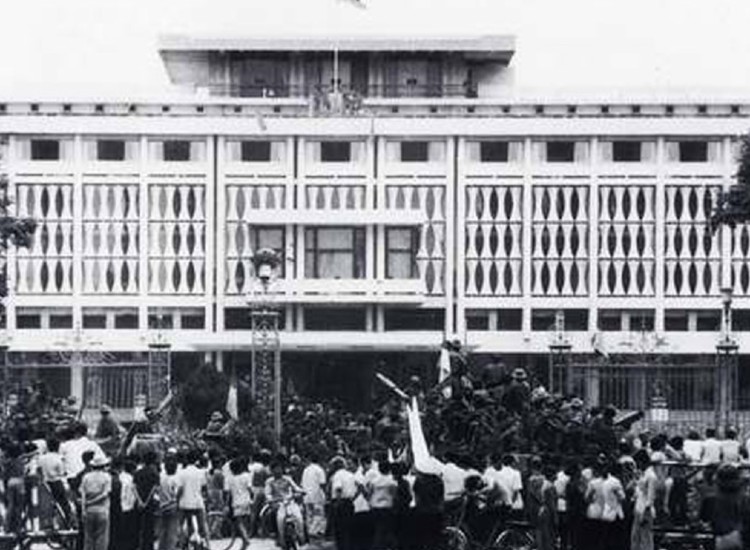
After the Geneva Conference was held in 1954, The Norodom Palace was under the control of Ngo Dinh Diem – the Prime Minister of the State of Vietnam. Diem subsequently renamed the Independence Palace in Saigon in 1955, making it the symbol for the Southern Vietnamese government back then.
In 1962, The Independence Palace in Saigon was destroyed beyond repair by uprising forces and was rebuilt from the ground up following the design by architect Ngo Viet Thu. The Independence Palace in Saigon became fully operational once again in 1966 and served as the office of the President of the Republic of Vietnam.
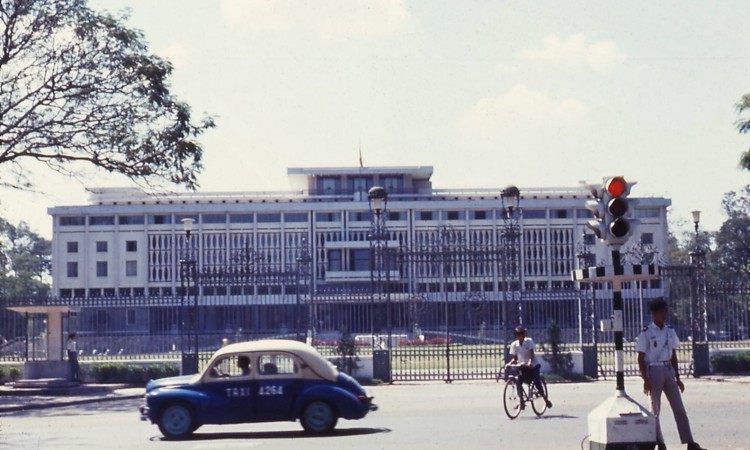
As the legendary Ho Chi Minh campaign reached its pinnacle in 1975, The Independence Palace in Saigon received a minor bombing by pilot Nguyen Thanh Trung – a spy that the North Vietnamese army planted inside the South Vietnamese air force. At last, a tank by the North Vietnamese army ran over the front gate of The Independence Palace in Saigon and the Vietnamese flag was placed atop its roof, marking the end of the Vietnam war.
III. What to see at The Independence Palace in Saigon
The Independence Palace in Saigon spans across a total of over 120000 square meters, with much of the area covered in lush green trees and plants. A few war artifacts can be found on display around the outdoor campus, along with several tennis courts

The actual Palace building covers 4500 square meters of ground and consists of 3 floors, 2 mezzanines, 1 terrace, 1 ground floor, and basement. The interior of the Palace remains nearly unchanged and contains a plentitude of informative signs to guide your visit and provide historical context. Unless time doesn’t allow, it is recommended that you take a look at every nook and cranny of this place to understand in full the stories behind this landmark.
-
Fixed area
The fixed area is likely to be the first area you walk into when visiting the Independence Palace in Saigon. This area comprises over 100 rooms, each serving different purposes and taking on different styles of furnishing and decoration.
Among the most prominent rooms, the Chamber stands out for its spacious area, which can hold up to 500 people. This room, often used for meetings and receptions, is adorned with splendid tapestries and couches, along with several gorgeous chandeliers emitting a pleasant golden light.
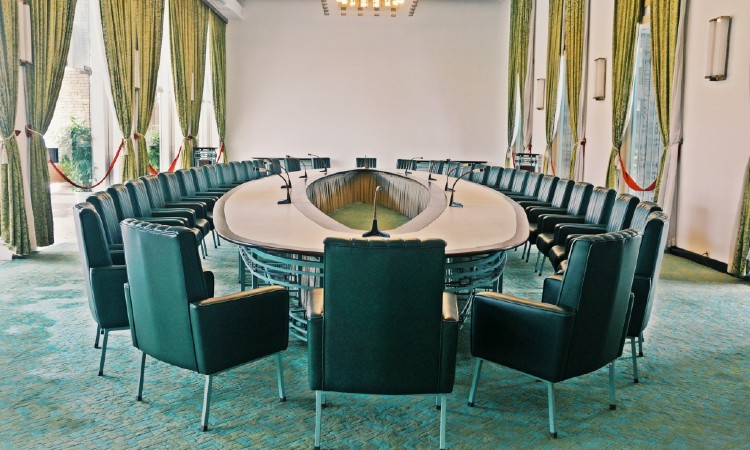
The Cabinet Office where all important meetings were held
On par with the exquisiteness of the Chamber is the Cabinet Room, where internal meetings would take place. A few other interesting rooms include the Library, which houses important books and documents belonging to the old administration and the Strategic Operations Room, where military liaison from 4 tactical regions is handled and strategic plans are made and updated.
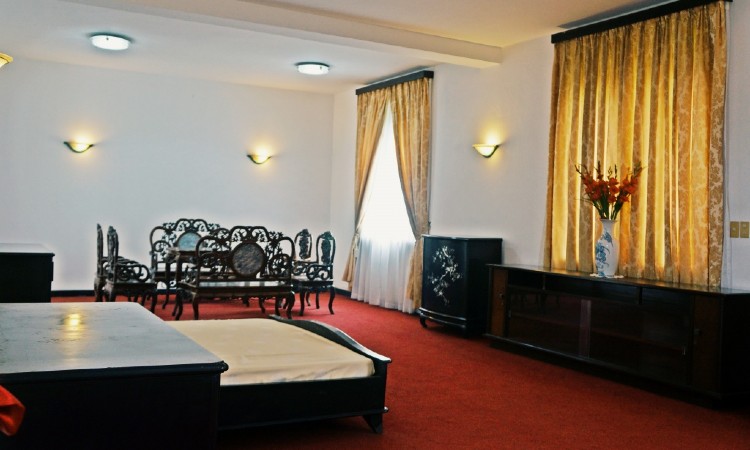
The bedroom of the President
Additionally, the Basement, which consists of specialized rooms for communications and publication, is also a worthwhile visit. You can also check out the Presidential Family Residence or the Ballroom to get a sense of how life was like for the highest-ranking residents of The Independence Palace in Saigon.

More one hundred rooms of the palace were decorated in different style depending on its use including the Cabinet Office, the throne hall, the working office of the President, the banquet room, the library, etc
-
Themed area
The themed area puts on display photos, documents, or items relating to several themes such as the Paris Peace Accords or the Ho Chi Minh Trail. The articles on display are accompanied by explanatory text to ensure you get the most accurate history out of your viewing experience. There is also a dedicated exhibition to detail the history of the Independence Palace in Saigon itself, called ‘From Norodom Palace to the Independence Palace in Saigon, 1868 – 1966’.
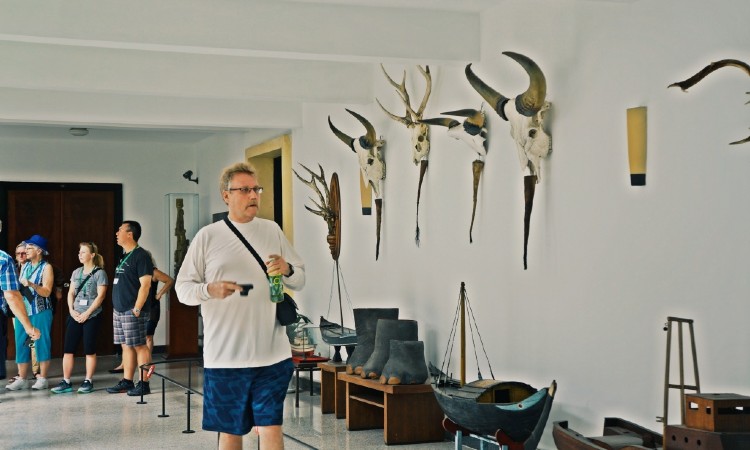
-
Complementary area
The complementary area features historical items recovered after the Vietnam war had ended and peace was established. These photos and documents serve to illustrate the spine-chilling horrors of war, as well as the undying spirit of resistance of Vietnamese people.
-
Artifacts
The artifacts in the Independence Palace in Saigon offers a glance at how history played out in times of war. The most prominent artifacts are undoubtedly the tanks 390 and 843 – the duo that knocked down the gates to the Palace to lead the way for the Revolutionary Forces.
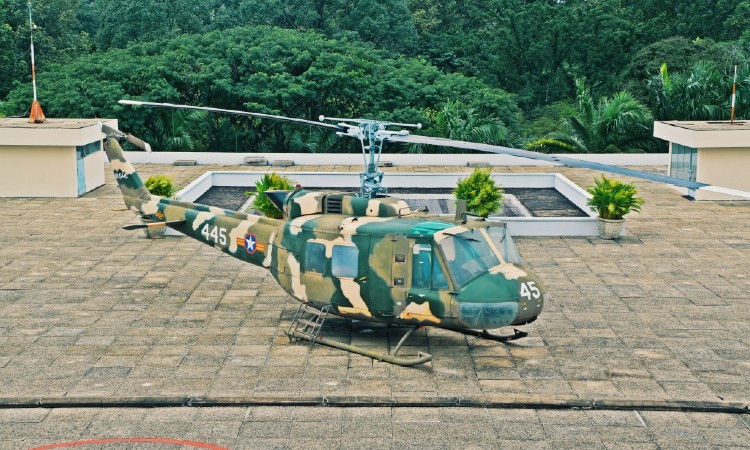
The helipad of The Independence Palace
On the roof of the Palace lies President Thieu’s UH-1 helicopter, placed adjacent to the markings of the two bombs dropped by pilot Nguyen Thanh Trung. The German Mercedes Benz 200 W110 – President Thieu’s vehicle – is also on display, along with the M152A2 Jeep used by the Revolutionary Forces to escort President Duong Van Minh to the Saigon radio station, where he declared surrender on April 30th, 1975.
IV. Notes when visiting the Independence Palace in Saigon

Regulations
- Formal clothing is required.
- Instructions from signs and security personnel must be followed.
- No luggage is allowed inside the Palace.
- No food or drink is allowed inside the Palace.
- No animal is allowed inside the Palace.
- No weapons and combustive or toxic substances are allowed inside the Palace.
- Visitors are responsible for any damages caused to the Palace.
Free audio tour
Self-guided tours with audio are provided in the following languages: English, French, Japanese, Korean, Chinese, German, Spanish, Russian, Thai and Vietnamese. Upon finishing your visit, you can also watch a 30-minute documentary called ‘The History of the the Independence Palace ’ in English, French, Japanese or Chinese.
Contact Us
Lux Travel DMC specializes in custom-made holidays with several choices of high-end services for leisure travel, business travel and MICE serving a wide range of luxury travelers from 1 to 1000 people. Taking into consideration every little detail from our dear customer, Lux Travel DMC promises you the perfect tailor-made holiday for everyone: from couples and honeymooners, families, group tours to foodies, golfers or wellness/spa enthusiasts and other travel interests of your liking.
- Address: No.456 Lac Long Quan Street, Tay Ho District, Hanoi, Vietnam
- Phone: (+84) 4 3927 4120
- Email: sales@luxtraveldmc.com
- Hotline: +84-336-276-996
- Website: https://luxtraveldmc.com
Website: https://luxtraveldmc.com
